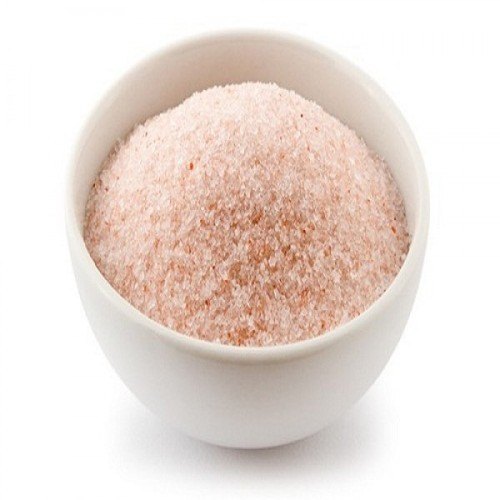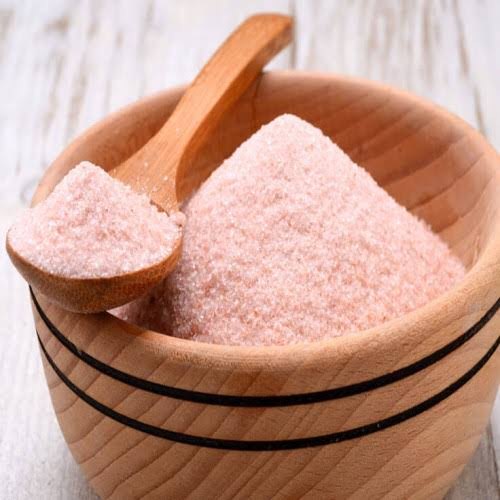Himalayan Crushed Suji Salt
The Purest Salt on Earth
Salt is the essence of life. Our body needs it, but not too much –or too little. Salt is made up of two electrolytes – sodium and chloride that help in maintaining the fluid balance in your body. It also helps regulate your blood pressure. In the last few years, salt or sodium has gained a bad reputation primarily because our appetite for junk or processed food has increased which has become the primary cause of excess salt consumption. Another reason for the sodium scare is the intense bleaching and refining that salt goes through which strips away most of its nutritional value. The regular table salt sitting beside your plate may not be as healthy as you think rather it has become a commercial factory-made product. But salt in its pure form is divine and chefs or those who love cooking will agree with us. You cannot do without a sprinkle of those snowy flakes that can totally transform your dish and bring out true flavors. According to the current guidelines of World Health Organization, adults should limit their salt intake to less than 5 grams (about one teaspoon) per day. As long as your salt consumption is within limits, there is nothing to worry. Salt is not really the villain that it is made out to be and so, people have been looking out for better alternatives to the refined table salt like rock salt, sea salt or the ancient Himalayan salt. Also known as the pink salt, hand-cut slabs of this unique variety of salt are derived from natural deposits found in the Himalayan foothills and the Punjab region of Pakistan. Unlike the table salt which is fortified, Himalayan salt is naturally rich in iodine. These blocks of opaque pink salt are known for their pure taste and infuse a rich flavor. The eye-catching pink color is due to the presence of iron oxide. The Himalayan salt has distinct structure (a colloidal form which means they are small enough to be absorbed easily by our body) and has been maturing for over 250 million years under these gigantic hills and extreme tectonic pressure. It is mined and then washed by hand and is natural and unprocessed which is why it is famously called the purest salt on earth.

The World’s Purest Salt Origin
Himalayan Salt is produced in Pakistan at Khewra Mines. Salt turns into a healthy and nutritious block when it remains under the sun. This boosts the energy levels and improves digestion. These two features come across as one of the best properties of this salt.
Natural Pink Suji Salt
Light Pink Suji Salt
Dark Pink Suji Salt

How to use the himalayan salt
You can use is for regular cooking or as a finishing salt. It offers a burst of saltiness for your palate. Himalayan salt is also good for seasoning meat as it clings to the surface well and spreads evenly. You can also blend the sweet and savory and use a pinch in desserts. American food writer and entrepreneur, Mark Bitterman has been playing with finishing salts and Himalayan salt blocks for few years now. In his book, Salt Block Cooking, he explains, “Himalayan salt blocks have very little porosity and because they have virtually no moisture, they can be safely heated or chilled to great extremes.” This makes it very versatile. You can crumble it over your food or even cook over it. Bitterman uses salt blocks to sauté, grill, chill, cure, bake, and even as a platter to serve. When foods are cooked over these blocks they acquire a delicate saltiness that sets them off perfectly.
health benefits of the Himalayan salt
The Himalayan crystal salt contains certain minerals like potassium, calcium and magnesium that makes it so precious. It is believed to contain as many as 84 trace minerals! Here are six amazing health benefits of the Himalayan salt that definitely makes it superior than your regular table salt.
Sole water to flush out toxins
The best way to experience the benefits of Himalayan salt is to make sole water. It is water that is fully saturated with natural salt. Take a jug and fill 1/4th of it with Himalayan salt. Then add water to top it up completely. Seal the jug with a lid and let it sit overnight.
Regulates blood sugar and hormonal balance
A daily dose of Himalayan salt can ensure proper flow of fluids in the body. A good balance of minerals and hormones, can help in improving your insulin sensitivity and prevent sudden blood sugar spikes
Improves digestion
The process of digestion actually begins in the mouth and Himalayan salt can help activate your salivary glands which release amylase (an enzyme that helps digest carbs). Later, in the stomach it stimulates hydrochloric acid as well as an enzyme that digests protein and further helps in the breakdown of food.
Salt therapy for respiratory problems
Salt therapy is a process which utilizes pure Himalayan salt to treat respiratory diseases. In some cases salt inhaler is used for the same while in the others, the person is made to sit in a room full of salt-rich air. When this salty air is inhaled, the particles travel through the entire respiratory system and the antibacterial and antimicrobial properties of salt clean your lungs and sinuses.
Bath soak
Soaking your body in a Himalayan brine bath can do wonders to rejuvenate your skin. Through the process of dermal absorption, your skin soaks up all the minerals that provide different benefits. For instance, chromium fights acne, zinc prevents scaring and Sulphur keeps your skin smooth.
Himalayan salt lamps to purify the air
Soaking your body in a Himalayan brine bath can do wonders to rejuvenate your skin. Through the process of dermal absorption, your skin soaks up all the minerals that provide different benefits. For instance, chromium fights acne, zinc prevents scaring and sulphur keeps your skin smooth.
